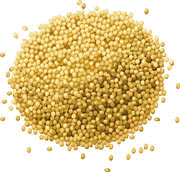International Sorghum and Millet Collaborative Research Support Program (INTSORMIL CRSP)
Date of this Version
1999
Document Type
Article
Citation
1999 INTSORMIL
Abstract
Presently, worldwide, more than 800 million people do not get enough to eat or have access to a balanced diet to be healthy. At the World Food Summit in 1996, the United States of America (USA) and 185 other countries pledged to reduce the number of malnourished people by one half by 2015. It is shocking that about 33% of preschool children in developing countries will be stunted due to malnutrition by the year 2000. The number of stunted children in Africa alone has increased significantly from 35 million in 1980 to 45 million in 1995 and is predicted to reach 49 million in 2005. Increased production of cereals, which are crucial sources of food energy and other nutrients, is necessary to reduce world hunger.
Sorghum and millet are two major cereal grains, particularly in semi-arid regions. In 1999, 65.8 million tons ofsorghum were produced worldwide, of which 19.7 million tons were produced in Africa, mainly for direct consumption by humans, and 14.7 million tons were produced in the USA, mainly for livestock feed to produce meat for human consumption. In the crop year 1997-1998, the USA exported 5.3 million tons of grain sorghum mainly for livestock feed, and in 1998, U.S. grain sorghum exports were worth $531 million. Large areas are planted to sorghum each year. For example, in 1999, sorghum was produced on 44.8 million hectares (ha, or 173,036 square miles, [sq miD worldwide, 23 million ha (88,728 sq mi) in Africa, and 3.4 million ha (13,278 sqmi) in the USA. About 500 million people worldwide depend upon sorghum for food, and most of these people are in developing countries where droughts and famine are common occurrences. Clearly, sorghum production and its utilization as food and feed are vitally important to developing countries and to the USA.


